Vengeful Guardian: Moonrider is a retro action-platformer from Joymasher, an indie studio specializing in hokey throwbacks to the testosterone-poisoned action movies and videogames popular in the late 1980s and early 1990s. Vengeful Guardian does not risk straying from their comfort zone, seeming to draw its inspirations in equal parts from Paul Verhoeven’s Robocop and a melange of generic samurai tropes.
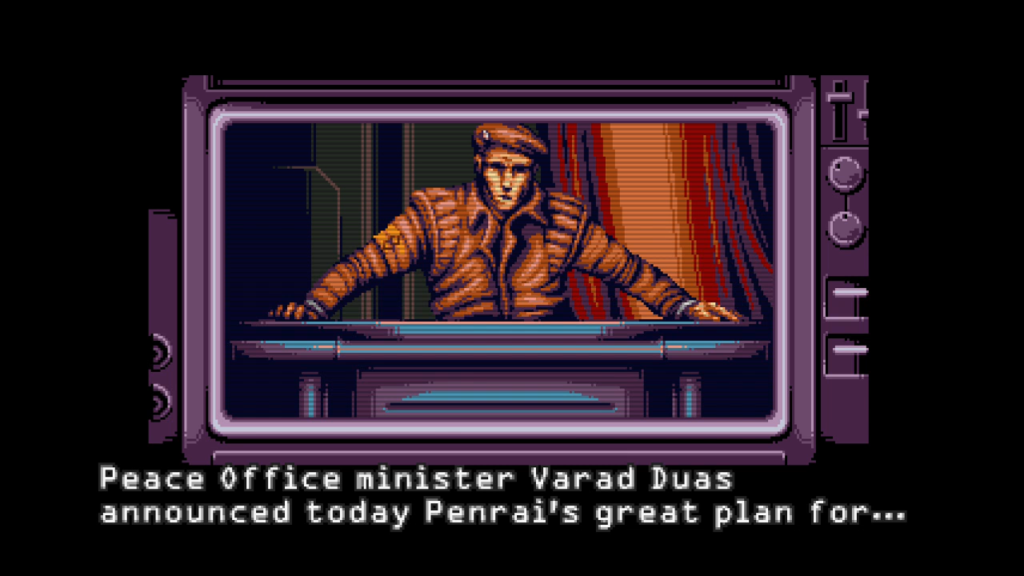
I am introduced to Vengeful Guardian’s world through the eyes of a nameless, faceless person channel surfing through television broadcasts. A Peace Office minister in military uniform makes pronouncements about plans of the ruling body, the Commission. The hostess of a cooking show offers advice for stretching out a family’s food ration. A perky model encourages the viewer to enlist in the military. And finally, a news anchor reports on violent terrorists being arrested near a school. In a flash away from the television, I see what really happened: The unarmed “terrorists” were gunned down by soldiers in sinister armor, their faces hidden behind red slits.
In an efficient few seconds, this introduction communicates to me the kind of world where Vengeful Guardian is set: An oppressive police state saturated with lies and propaganda where an active rebellion is violently crushed by the regime’s footsoldiers.
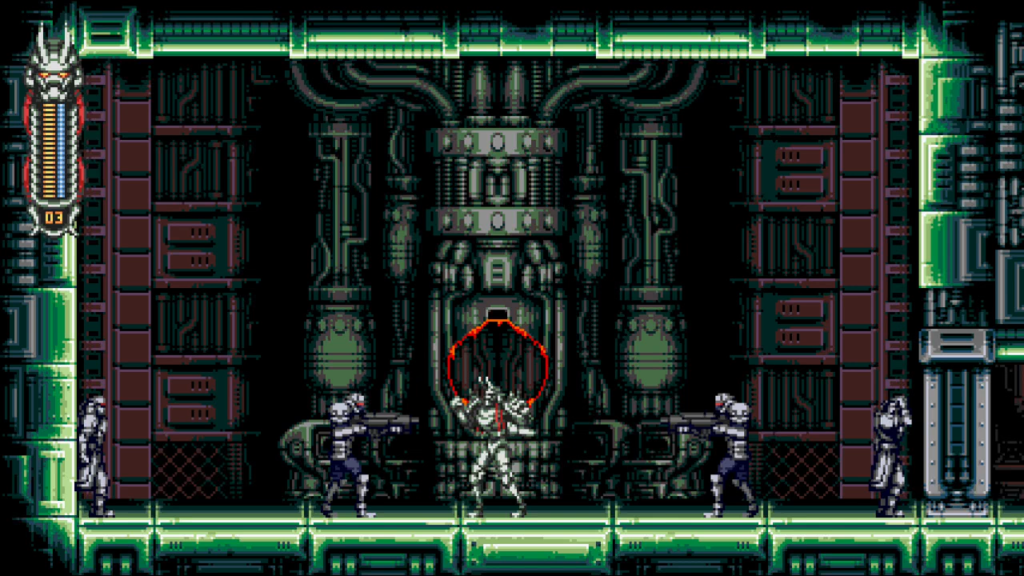
The hero that steps in to save this world is Moonrider, a sleek cyborg whose outer chassis appears somewhere between a samurai’s armor and a demon’s horns and scales. Moonrider retains hazy memories of the Commission, particularly the Peace Office minister, though their full connection to the dictatorial power structure and how they were transformed into a literal killing machine is a mystery I have to piece together through clues exposited across the two-hour experience.
Moonrider’s vicious capabilities are evident from the moment he forces his way out of a pod in a military bioweapon lab. With a swing of his arm, a purple energy blade erupts from his hand, deflecting bullets and decapitating enemy soldiers with a few swings. He’s as agile as he is powerful, climbing along suspended pipes and jumping between walls with ease. This agility can also be used offensively as a diving kick onto an enemy. These kicks can be performed in succession, turning Moonrider into a deadly acrobat cavorting between walls and enemy bodies without once touching the ground.
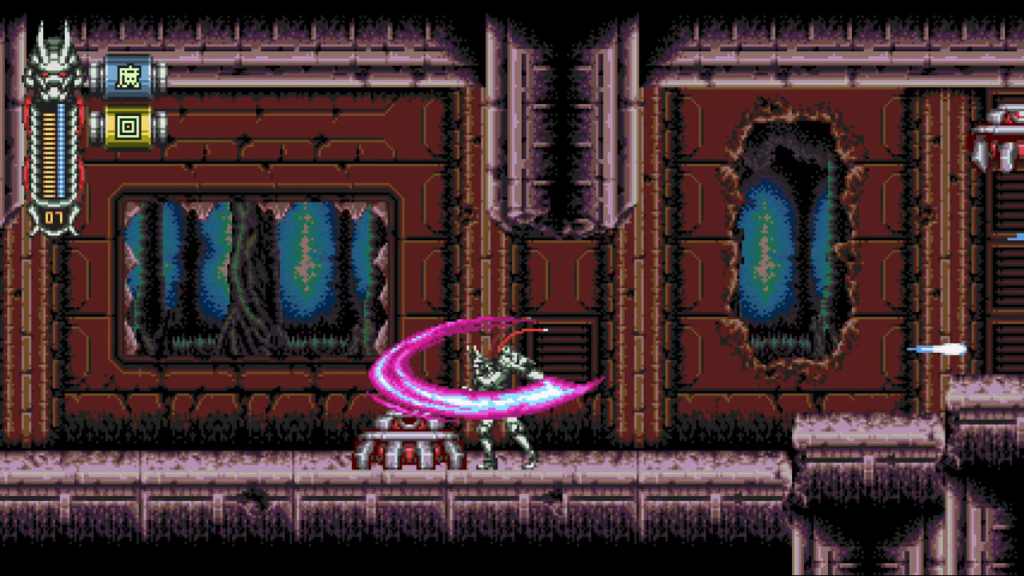
When I hold down the right trigger, Moonrider runs at their fullest speed. If I press the attack button while they run, Moonrider leverages their speed into power, dealing even more damage to those unfortunate enough to get in their way, though their attack ends with a hard stop that leaves them momentarily vulnerable. Most levels are designed to encourage running at all times for both maximum speed and damage. If I don’t get this point, the harsh ranking system that seems weighted most towards how fast I finish a level will underline it for me.
After Moonrider escapes from the bioweapon lab, I am free to play subsequent levels in any order I please. Despite the cold cybernetic dystopia setting, each mission looks and feels distinct. In Asura’s Fleet, Moonrider takes to the sky, jumping between the tops of one-man fighters to reach a command ship; I must be quick in my guidance, as the fighters are shot down almost as soon as Moonrider touches them. The Fallen City is an ancient ruin infected by fleshy, consuming tendrils that grow in density the deeper in they travel. Moonrider infiltrates the Laser Research Base by running down the barrel of a giant cannon, ducking into alcoves to avoid periodic laser blasts—a sequence lifted straight out of Joymasher’s earlier Oniken.
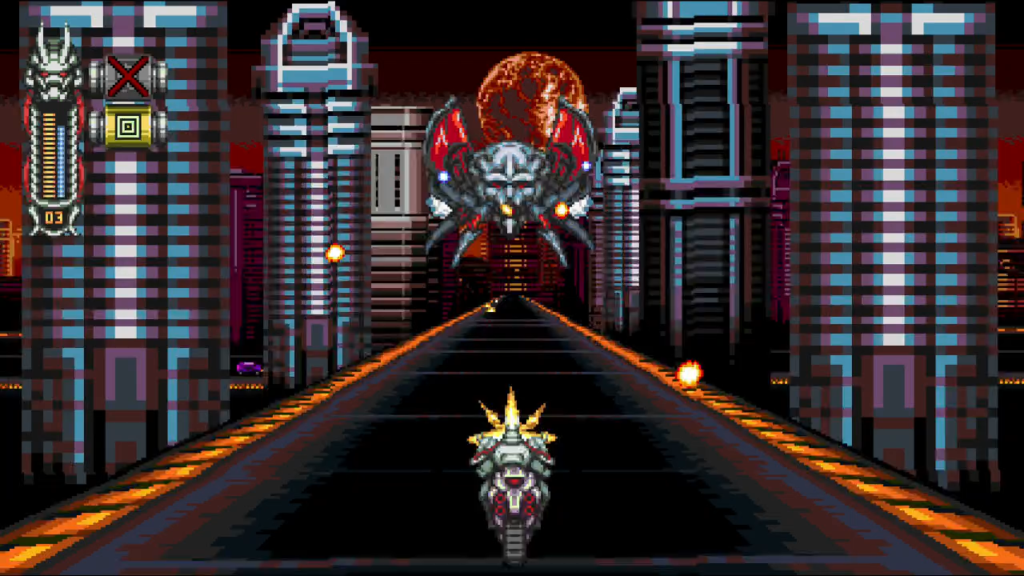
The most visually exciting and unique level is Iwondonilo City. To get inside, Moonrider blazes along a highway on a motorcycle in a section that evokes the SNES’ Mode 7 graphic rotation and scaling technology to spectacular effect. It’s such a cool throwback to an iconic artifact of 16-bit videogaming that Vengeful Guardian repeats the trick in the penultimate level, sending Moonrider on a desperate race to a space elevator where his final nemesis prepares to enact their final plan.
At the end of each level, Moonrider faces a boss. Many are also cyborg warriors created in the Commission’s bioweapon lab. Others are massive creations that fill entire rooms, their purpose an exercise in questionable scientific progress and the inhumane depths of a fascist society.
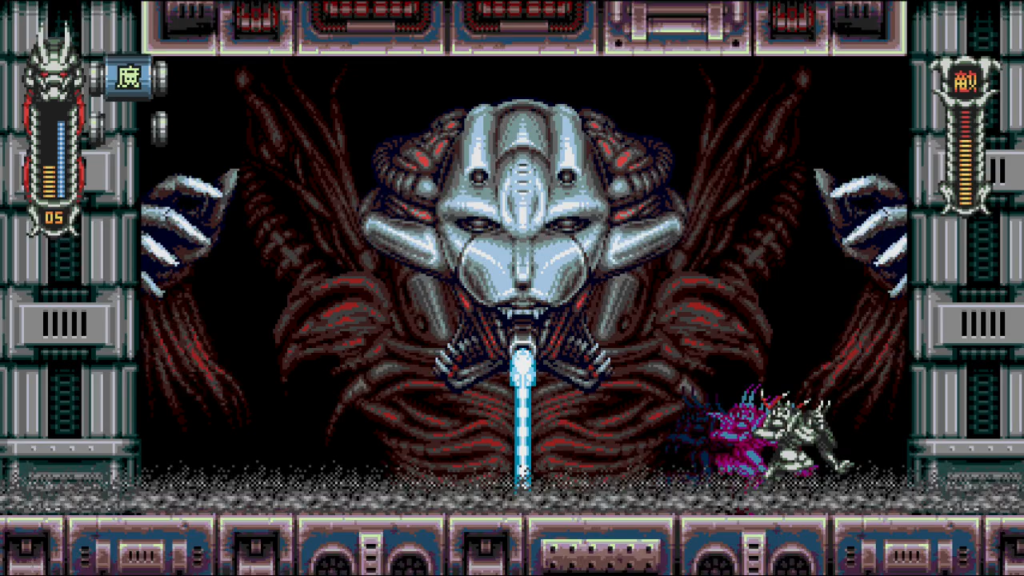
Each boss emphasizes the boss design mastery Joymasher has cultivated in their earlier retro platformers. Studying their attacks and carefully reacting to their every move instead of going on an all-out offensive will see me guiding Moonrider to success against each of their opponents. Depending on the choices I make, even going all-out may be a viable option.
Vengeful Guardian’s world hides many customization options that can make my version of Moonrider quite different from another player’s. These options can potentially take the first level’s slight difficulty and trivialize it into nothing. Special chips are hidden in most levels, placed behind breakable walls or just offscreen beyond a deceptively harmless pit. Moonrider can install up to two at a time. Each confers a passive ability like increased damage with every enemy killed, slow hit point regeneration, and slow magic point regeneration.
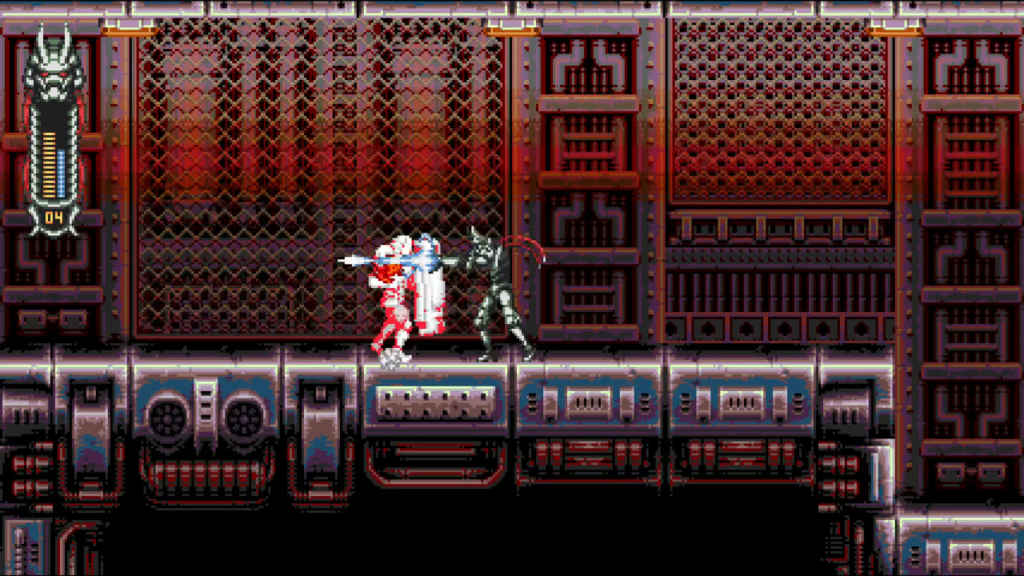
Magic points power Moonrider’s special abilities. They begin with Moonspear, which sends a bolt of blue energy erupting from their arm that reaches further and deals more damage than their basic attack. Defeating a boss at each level’s end adds one of their abilities to Moonrider’s repertoire. The Flamerang lets them throw a flaming projectile, while the Photon Dash sends them charging forward, dealing high damage to whatever they crash into. This system is cribbed from Mega Man, but unlike in that famous series, there doesn’t seem to be any strategic advantage to gaining some weapons early. All of them, including the default Moonspear, feel equally devastating against every boss.
It is due to these customization options that I don’t feel challenged. Having constant, if slow, hit point regeneration and exponentially growing attack power means most enemies die in one hit. By the time Moonrider reaches most bosses, they may be button-mashed to death with only minor considerations for the hero’s personal safety. It is only the final boss who sends me to a few Game Over screens before I am able to defeat him.
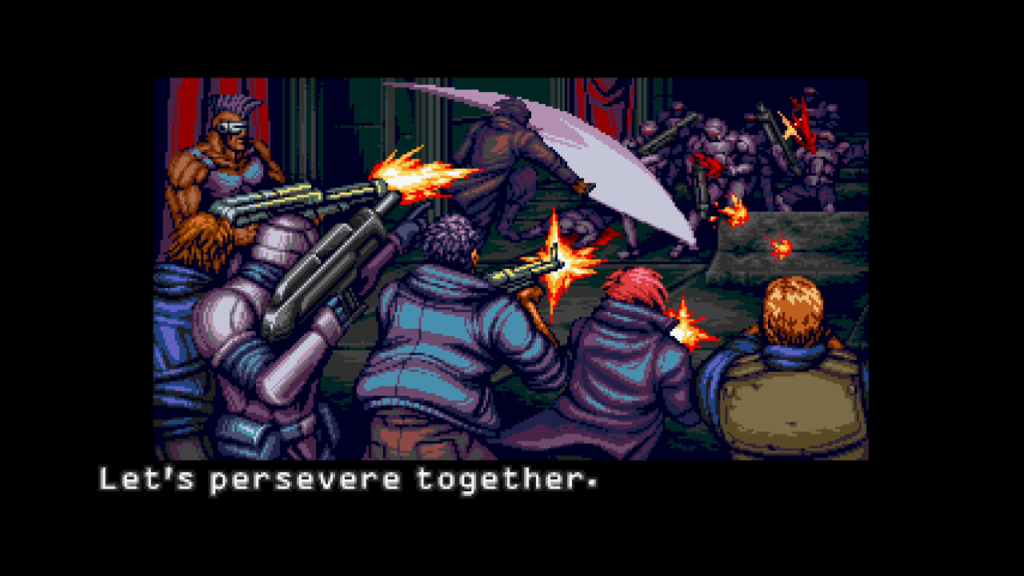
If I were pressed to describe Vengeful Guardian: Moonrider to a fan of Joymasher’s earlier titles, I would say it is Oniken if it was inspired by the aesthetics of Cyber Shadow. It’s an adequate retro platformer that plays to the developer’s strengths. This may be its main failing; it feels like an overly familiar, even obvious, addition to their oeuvre. If you’re not yet familiar with Joymasher, this is as good a place to start as any. If you are familiar, you may find yourself as underwhelmed as I.